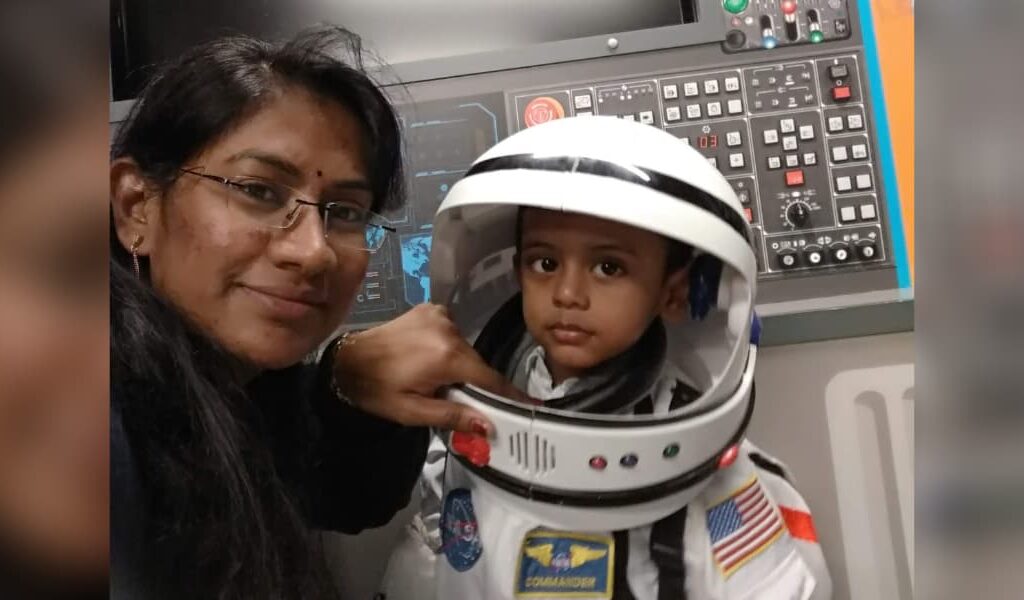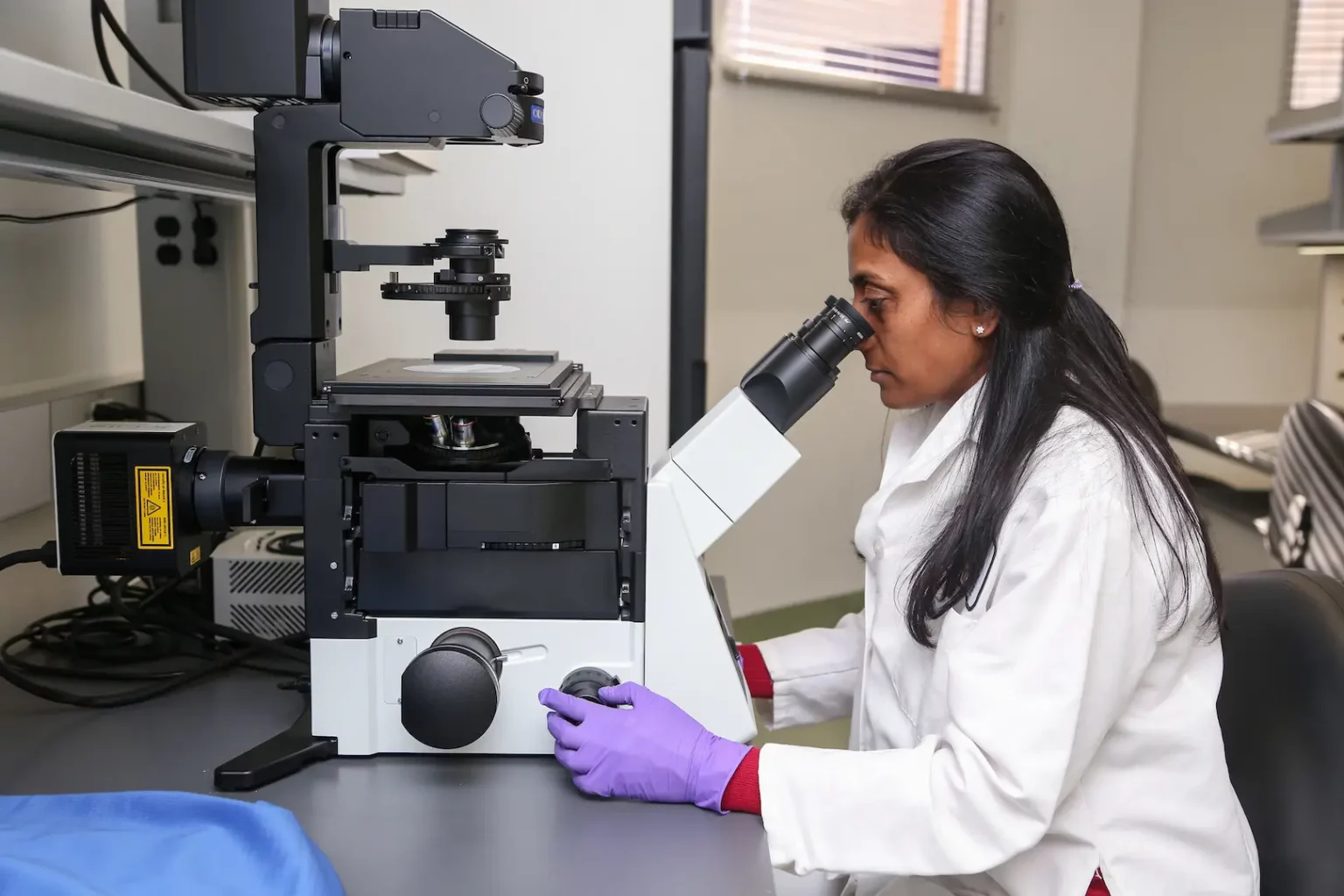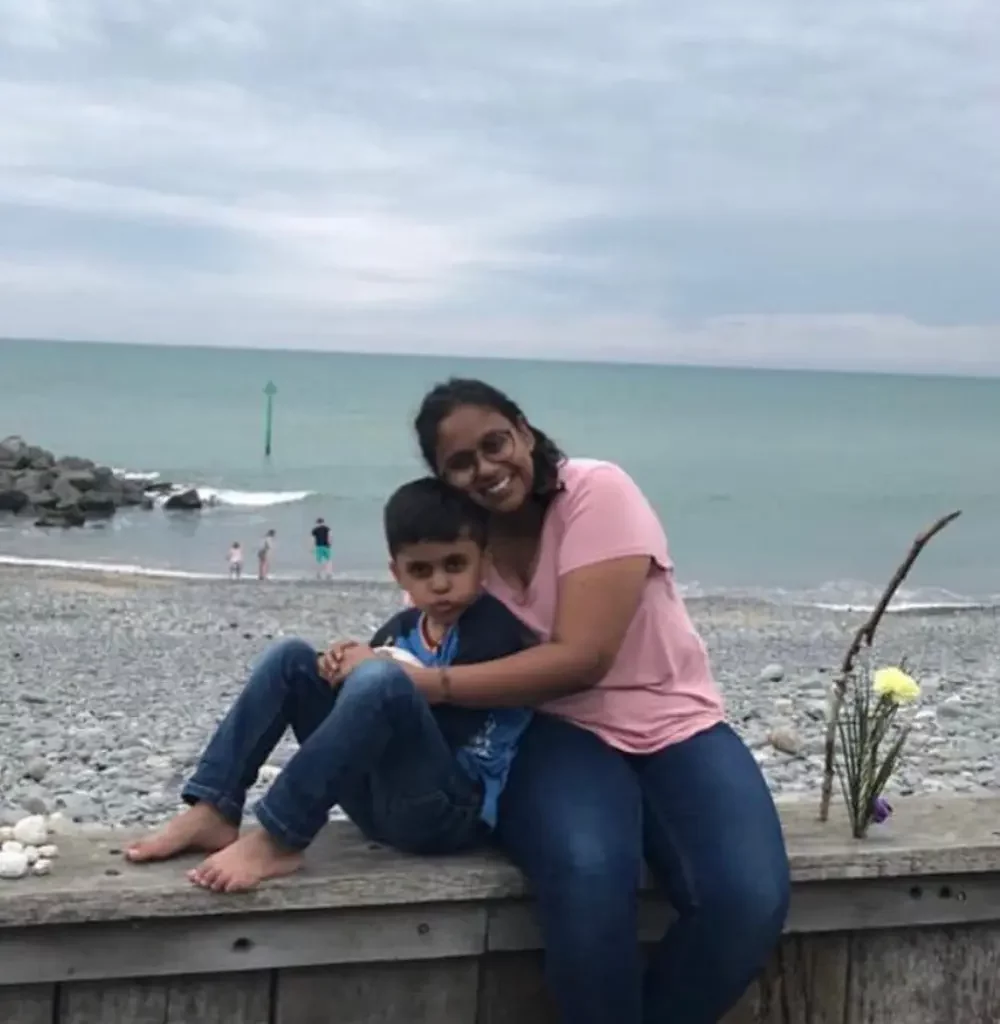Posted on 28th November 2022
Doctorate and diapers: How women navigate PhD and parenthood
By Priyamvada Kowshik
How successful they are rests heavily on enabling institutional systems, social/familial support and gender-sensitive policies

Dr Hema Prakash is a postdoctoral fellow at IIA, with an experience of over 15 years in research. She is currently a Women Scientist fellow and is uncertain about what the future holds for her once it’s over
Dr Hema Prakash is a postdoctoral fellow at IIA, with an experience of over 15 years in research.
Gurgaon, Haryana: Dr Pallavee Srivastava, a postdoctoral fellow at Cardiff University, UK, plans her lab work to ensure that she picks up her son from playschool on time. The microbiologist is working on metal-microbe interaction to isolate microbes in sludges that can clean up the environment.

Dr Srivastava plans her lab schedule in a way that lets her be there for her son
My guide and colleagues understand that I have the responsibility of a six-year-old child. We plan our meetings accordingly,” says the single mom.
Back at the Birla Institute of Technology and Science, Goa, her faculty members and PhD guide provided an enabling environment during her pregnancy. “When I got back after maternity leave, my guide provided me with a room to express breastmilk and allowed me to store it in her home refrigerator. She gave me the confidence that I can be both a good scientist and mother, that I do not have to pause one to be the other,” shares Srivastava.
Like her, several women pursuing research have to balance PhD/postdoctoral research and parenting. How successful they are rests heavily on enabling institutional systems, social/familial support and gender-sensitive policies.
It was not smooth sailing for Dr Madhulika Kushwaha (34), a PhD in environmental sciences. Her first child was born in 2018, in the fourth year of her doctoral studies at the Central University of Himachal Pradesh, Dharamshala. Kushwaha availed the University Grants Commission (UGC)-mandated eight-month maternity leave. “A PhD is challenging work, and it gets even more so with a pregnancy,” says Kushwaha, whose second baby arrived after her thesis submission.
Hailing from Uttar Pradesh, she lacked family support in Dharamshala. “I took a break after the PhD to be around my toddlers,” says Kushwaha, who plans to apply for the Department of Science and Technology (DST) fellowship schemes for women.
Dr Hema Banagere Prakash (37), a postdoctoral fellow at the Indian Institute of Astrophysics (IIA), Bengaluru, applied for the DST Women Scientists programme to get back to research in observational astrophysics, after childcare responsibilities, postpartum setbacks, sudden loss of a parent and COVID-19 lockdown dashed her chances as a postdoc in California.
Hailing from rural Karnataka, she studied in government schools and pursued her passion for astronomy with her father’s support and encouragement.
I have invested 15 years in research. However I'm not sure what will happen after the 3-year Women Scientist fellowship. Unless I get a faculty position that ensures a dedicated lab and research support, the uncertainty will continue,” she says.
The stories of these three scientists illustrate some of the challenges women face in pursuing scientific research while raising children. Supportive structures exist, but they offer ad-hoc support and fall short of ensuring sustained growth of career, financial security and the independence and investment that good science demands. As a result, several quit research to take up industry jobs.
Number crunching
According to the All India Survey on Higher Education (AISHE 2019-20), women comprised 49% of the total enrolment in higher education in all disciplines. Of this, 0.5% took up doctoral studies. Of the total PhD level degrees awarded in the year, around 44% (all disciplines) went to women.
A closer look at the data showed mathematics had 63.9% female students at the postgraduate level, which dropped to 45% at doctorate level. Chemistry, which saw the highest number of PhD registrations in sciences, had 57.6% female students for PG and 42% for PhD.
The situation is even more stark in engineering and technology, which has 70.8% male and 29.2% female students at the undergraduate level. The Institutes of National Importance (largely science and tech) that contributed to 23% of the doctorates had the lowest male to female ratio among students. Moreover, in faculty positions, there were only 18 women for every 100 men. This has a direct bearing on the proportion of women in hiring committees and other decision-making roles. In August 2021, the government informed the Lok Sabha that only 16.6% of those involved in scientific research in India are women.
“Getting an academic job that allows a scientist to continue research work is a huge effort,” says Professor Mousumi Das, a physicist and faculty member at the IIA.
“In many cases, we see that women who are able to climb the academic ladder — finish their PhDs, do a postdoc, preferably abroad, and get a faculty position on returning — are the ones without kids.”


Dr Pallavee Srivastava is a microbiologist and a postdoctoral fellow at Cardiff University, UK
Women Scientists Programme
The DST’s Women Scientists Programmes acknowledge the barriers and break in career that women may face due to marriage, migration, pregnancy and other challenges typical to the gender. They offer three categories of fellowships in the 27-57 age group for pursuing postdoc studies after facing a career break.
Women involved in research in frontier areas of science and technology can apply for a three-year fellowship, which can be availed any number of times. It is competitive and has strict eligibility and selection criteria. Women scientists say that while it offers a stopgap arrangement to continue research, the scheme does not factor in growth in career and financial remuneration commensurate with seniority and experience, as all awardees get a fellowship amount of (approx) Rs 55,000 per month.
The total project cost of Rs 30 lakh accounts for small equipment, contingencies and consumables. However, research also requires investing in a dedicated lab and equipment, which is not possible with this fellowship.
Dr Moitreyi Banerjee, who worked on cell culture-based molecular biology at the Indian Institute of Chemical Biology, Kolkata, is a DS Kothari Postdoc Fellow at Goa University’s biotech department. She became a mother during her PhD, and is presently pursuing her second postdoc.
“For Women Scientist programmes, you have to find a mentor with matching criteria for the project and your expertise, with an existing, well-equipped lab,” she says.
My first postdoc was in Goa University’s zoology department, now I am in the biotech lab... If we work on different project areas every three years, it will hamper expertise-building and growth. I should have been an assistant professor by now, but do not know what my future holds after two years when my fellowship ends,” she adds.
‘Gap years’ and challenges
If a new mother chooses to take a break, the discontinuity and ensuing “gap” in research and publication of papers can have a lasting impact on her career. Faculty appointments are a direct reflection of successful doctoral and postdoctoral opportunities.
Former IIT Roorkee director Prof AK Chaturvedi says a few criteria/conditions in hiring or selections for awards should be relaxed for women. In 2017-18, Chaturvedi was instrumental in removing timing restrictions for female students in IIT Roorkee campus, thus making all facilities accessible 24×7, just like their male counterparts. “We also relaxed the age limit for women from 40 to 42 years for the Institute Research Fellowship for IITR faculty, and tried to include women in faculty selection committees,” he says.
“The research metric today is publication of papers, and a gap may be disadvantageous,” says Dr Jyutika M Rajwade, a senior scientist (category F) at Agharkar Research Institute, Pune. She completed her PhD 27 years ago, while carrying her baby to full term, but the real challenge was finding a way to continue her research after. The postdocs she now mentors, continue to face similar challenges, she says.
Societal biases
In a positive move, in December 2021, UGC announced one-time maternity/child care leave for women for up to 240 days in the entire duration of MPhil/PhD. However, springing back to work is not always easy. “It took me almost three months to realign and start writing my thesis!” recalls Rajwade.
“A PhD demands out of the box thinking. Some disciplines, like theoretical physics and mathematics, require a lot of solitary thinking. This is especially hard with a baby around,” says Das.

Dr Pallavee has had the blessing of supportive PhD guide and postdoctoral colleagues during and post her pregnancy

Dr Hema Prakash is researcher in the field of observational astrophysics
She stresses on creating supportive structures and more opportunities for women, and the need to challenge biases. “Everyone is thinking about the baby, which is natural. But in the long run, the woman may lose out,” she says.
GATI for gender parity
Acknowledging the need for gender advancement in STEMM at the institutional level, the DST launched the GATI (Gender Advancement for Transforming Institutions) pilot in 2020-21. The GATI charter makes it a moral imperative for all institutions to provide equal opportunity at all levels, by way of policy, practice, action plans and by promoting a culture for change.
Prof Pranita Sarangi, faculty in-charge of GATI at IIT Roorkee, one of the 30 institutions that are part of the pilot launched in August 2021. “GATI aims at creating a better environment, supportive systems and policies that facilitate gender-supportive career growth and remove barriers to get to leadership positions,” she says.
Its self-assessment process involves extensive data collection from all facilities for research, professional support, induction process and decision-making. It is the Indian equivalent of Athena Swan Charter, a framework used globally to support inclusion, diversity, equity within higher education and research.

Add a Comment